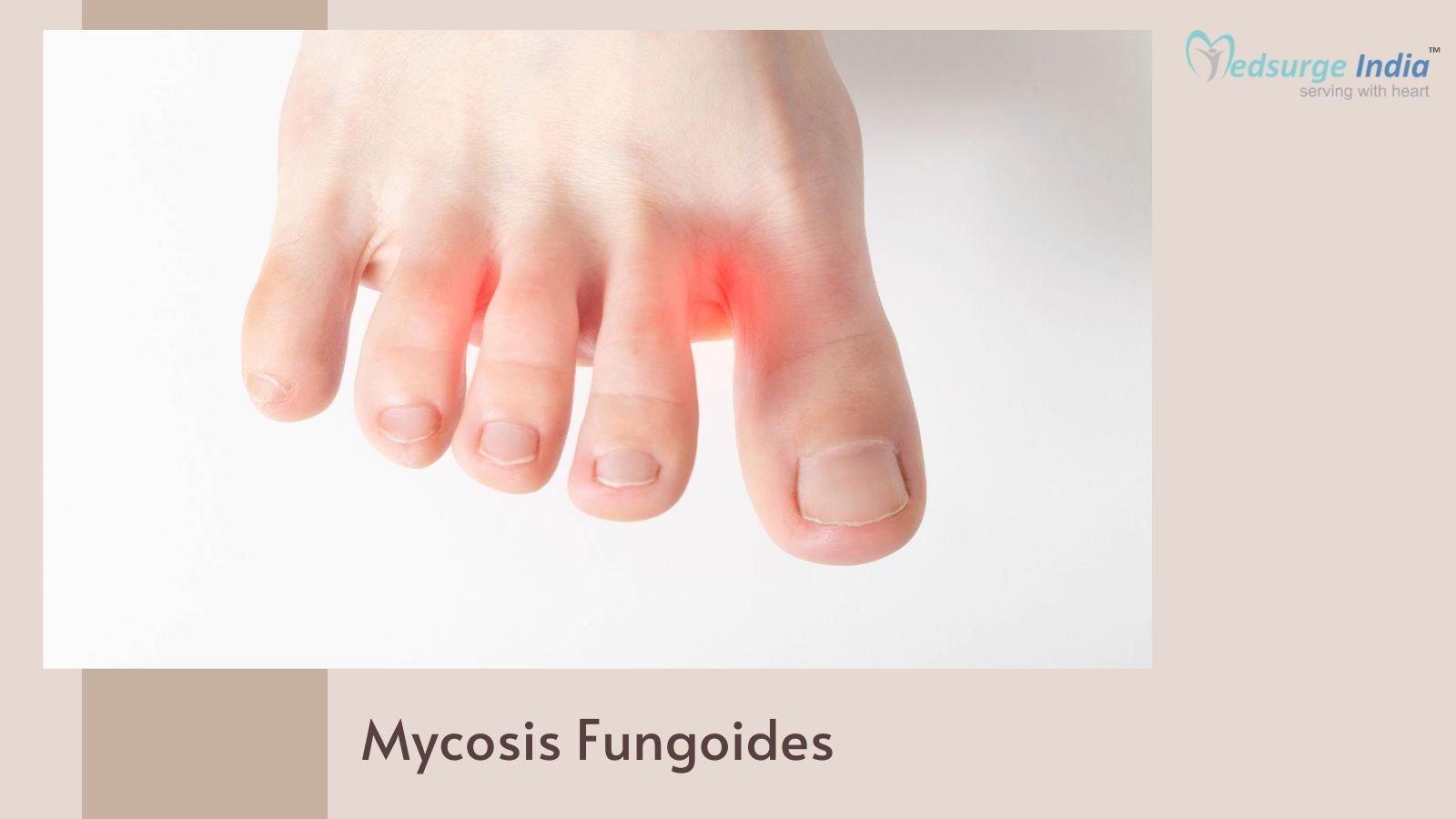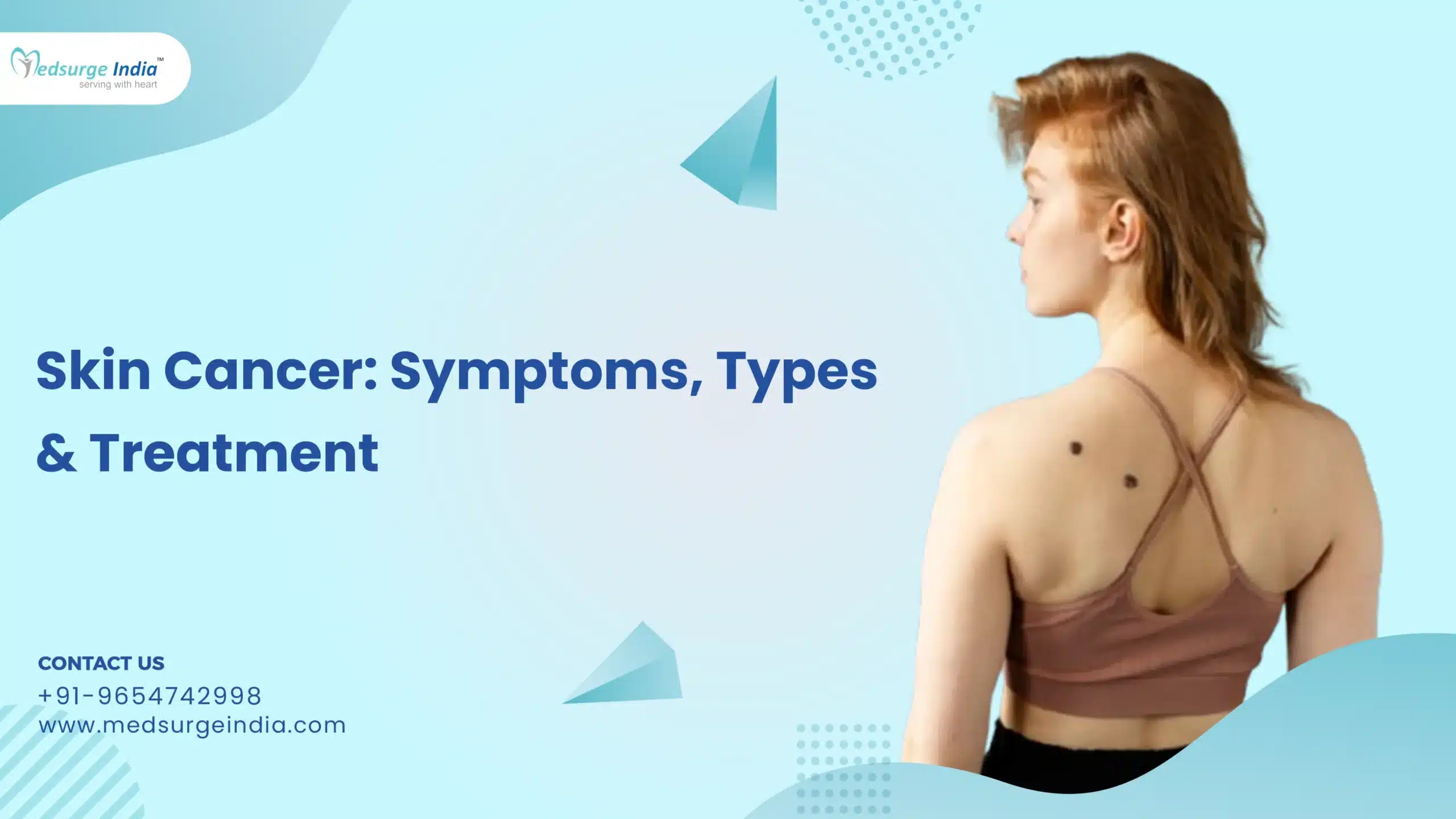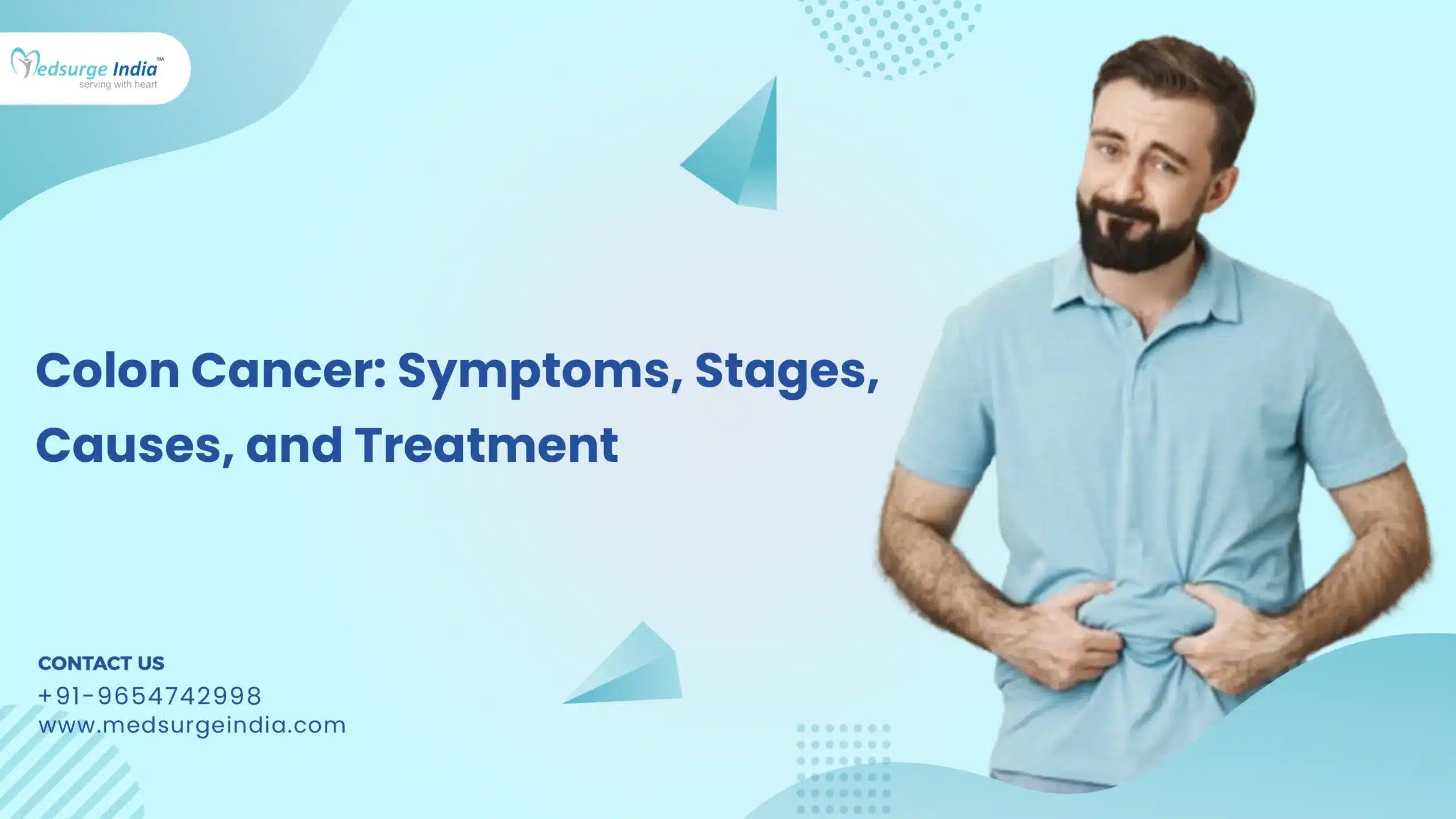
Mycosis Fungoides: Symptoms, Causes & Treatment
A red rash can occasionally be more than just a bothersome skin issue. It could be a symptom of a disease, such as the blood cancer known as mycosis fungoides.This rare ailment is also known as cutaneous T-cell lymphoma or Alibert-Bazin syndrome. When T-cells, which are white blood cells, overgrow and travel from the blood into the skin, it occurs. The rash is brought on by this and may be irritating. Mycosis fungoides have an unknown origin. It could be caused by a virus, chemical exposure, or genetics. Any age can experience it, although most people do so in their 50s or 60s. Men are twice as likely to have it as women.
Chronic mycosis fungoides have a tendency to get worse over time. In later stages, it can spread to other organs including the liver, brain, or digestive tract, as other malignancies can. Mycosis fungoides is a disorder that can be fatal. For the greatest results in terms of health, early diagnosis and treatment are crucial. Continue reading to find out more about this uncommon skin condition and what to do if you believe you have mycosis fungoides.
Causes Of Mycosis Fungoides
The precise causes of mycosis fungoides and other varieties of T-cell lymphomas are unknown to medical professionals. T cells that alter or mutate and develop into cancer cells may be the initial cause of mycosis fungoides. White blood cells called T lymphocytes or T cells often assist the immune system in defending the body.
What makes T-cells alter is unknown. According to certain research, mycosis fungoides may be brought on by specific bacteria, viruses, or chemicals from the environment.
Although the exact etiology of mycosis fungoides is unknown, there are some known risk factors:
- Age: People over the age of 40 are most affected by mycosis fungoides, while people over the age of 60 are most likely to acquire Sézary syndrome.
- Chromosomal abnormalities: The majority of people with either illness have at least one chromosomal abnormality, which can cause genetic glitches that allow cells to proliferate and divide uncontrolled. For instance, areas of chromosomes 7 and 17 frequently contain additional DNA in mycosis fungoides patients. Alternatively, those who have mycosis fungoides lose DNA from certain chromosomes 9 and 10 areas.
- Genes: Although neither mycosis fungoides nor Sézary syndrome is regarded as an inheritable illness, it is believed that a variation of the human leukocyte antigens (HLA) class 2 genes is linked to the development of mycosis fungoides. (6) HLA genes assist the immune system in separating proteins generated by viruses and bacteria from those that are benign and natural.
- Sex: Diagnoses of men are about twice as likely to occur as those of women.
Retroviruses, such as human T-cell lymphotropic viruses, and exposure to carcinogenic (cancer-causing) chemicals are two further hypotheses for the cause of cancer.
Symptoms Of Mycosis Fungoides
Mycosis fungoides symptoms might resemble those of less severe skin disorders like eczema or psoriasis. For years or even decades, mycosis fungoides may appear as a skin rash or scaly patch of skin since it often progresses extremely slowly. As a result, individuals with this skin cancer may first receive a false-positive diagnosis for another skin illness.
Depending on the stage you are in with mycosis fungoides, your symptoms will change. Mycosis fungoides may initially resemble a sunburn or rash. It usually starts in a spot of skin that does not receive a lot of suns, such as your back, tummy, breast, buttocks, or upper thighs.
Mycosis fungoides often progresses slowly and have four stages. However, not everyone passes through them all:
- First stage: A scaly red rash that often appears in shadowed parts of the body, such as your rear end; this stage is symptom-free and can linger for months or even years.
- Second stage: A thin, red rash that resembles patches
- Third stage: Tiny, raised bumps or hard, maybe red plaques
- Fourth stage: Lumps or tumors that resemble mushrooms and have the potential to become infected.
Tumors, plaques, and patches can all coexist on the body. However, the majority of those who have had mycosis fungoides for a long time only have the first two.
Helpful – Lymphoma Treatment Cost in India
Stages of Mycosis Fungoides
Mycosis fungoides are divided into phases by medical professionals based on how far along the skin condition is and which organs are impacted. These are the stages:
Stage 1: There are patches or plaques on your skin, but they haven’t reached your lymph nodes, blood, or other organs.
- 1A: Less than 10% of your body is covered with patches or plaques.
- 1B: At least 10% of your body is covered with patches or plaques.
Stage 2: Your lymph nodes are swollen but not malignant, and you may have spots or plaques on your skin.
- 2A: Your skin is free of malignancies.
- 2B: You have one or more skin tumors.
Stage 3: Redness, spots, plaques, or tumors cover more than 80% of your skin. Although they may be swollen, your lymph nodes are not malignant.
- 3A: Your blood contains no cancerous cells.
- 3B: There might be a small number of malignant cells in the blood.
Stage 4: You either have a significant number of Sézary cells or cancer has started to spread, in addition to the majority of your skin being affected.
- 4A1: You have swollen lymph nodes that are not malignant. Additionally, the Sézary cells in your blood are in plenty.
- 4A2: Although cancer may have migrated to other regions of your body, it is only presenting to your lymph nodes.
- 4B: cancer has progressed to more organs, such as the spleen or liver
Diagnosis Done for Mycosis Fugoides
Numerous symptoms of different skin disorders are shared by mycosis fungoides. A diagnosis based only on a visual skin inspection may be difficult. Eczema and psoriasis are two other skin disorders that are frequently confused with mycosis fungoides.
Your healthcare practitioner may do further tests, such as the following, to determine whether mycosis fungoides is present or not:
- Lymph node biopsy or skin biopsy
- Blood test.
- CT imaging.
- PET imaging.
A skin biopsy or blood test may occasionally not detect this skin problem. More tests will need to be run by a physician. T cells in the blood may be the focus of specialized examinations, and organs may be seen using CT scans. A genetic test may also be suggested by a physician.
Treatment for Mycosis Fungoides
Depending on the disease’s stage, mycosis fungoides require different treatments. Currently, there are more different types of therapy, with more being tested. Some treatments can assist with symptoms including itching, swelling, and discomfort of the skin.
 Your healthcare professional could advise:
Your healthcare professional could advise:
- Systemic treatment: Your entire body can be treated with oral medications like methotrexate and bexarotene (Targretin®). Histone deacetylase (HDAC) inhibitors and interferon are examples of other medication classes. Chemotherapy drugs such as gemcitabine, pegylated liposomal doxorubicin, or pralatrexate are commonly administered intravenously.
- Immunotherapy: These medications strengthen your body’s defenses against cancer cells. Its functioning is still being studied by researchers.
- Skin-directed therapy: Topical gels, steroids, retinoids, or ultraviolet (UV) light are used to treat cancer on damaged skin regions. In phototherapy, psoralens, an oral medication, is coupled with UV radiation to kill skin cancer cells. Additionally, your doctor could use a topical chemotherapeutic drug like mechlorethamine.
- Targeted treatment using monoclonal antibodies: These drugs find and eliminate cancer cells. If your body has not reacted to other systemic therapies such as mogamulizumab-kpkc (POTELIGEO®) and brentuximab vedotin, your doctor may utilize targeted treatment.
- Radiation treatment: Radiation therapy uses powerful energy beams to either kill or slow the development of cancer cells.
Note: Traditional chemotherapy is seldom ever used by medical professionals to treat mycosis fungoides. Treatment for mycosis fungoides with chemotherapy is not always successful. There is also a considerable chance of negative side effects.Mycosis fungoides cannot be prevented with current knowledge. By making routine meetings with a healthcare practitioner, you can lessen the dangers related to late-stage mycosis fungoides. Regular examinations can improve the likelihood of spotting mycosis fungoides in its early stages.Conduct a monthly skin self-examination to look for moles, rashes, or other changes. To see a dermatologist, make an appointment if you detect any skin changes (skincare doctor).
Bottom Line
This particular kind of skin cancer is slow-growing, especially in the early stages, despite the fact that there is presently no treatment for it. Several different sorts of therapies can help control and reduce the symptoms of this skin problem.Mycosis fungoides frequently resemble other common skin disorders including eczema and psoriasis, making diagnosis challenging. If you detect any rashes on your skin or suspect you may have this skin problem, get medical attention straight once.In addition to finding doctors, hospitals, and specialized treatments, you can contact Medsurge India if you need treatment for this disease. Depending on your needs, we will find the most appropriate medical treatment option. Our staff will provide you with a list of licensed, recognized, and trustworthy physicians and medical facilities in relation to your medical needs. Additionally, we provide a cost-effective treatment plan. Aside from that, we help patients with a wide range of other things, like getting travel permissions and medical visas.
Reference
- https://rarediseases.org/rare-diseases/mycosis-fungoides/?filter=Diagnosis
- https://www.everydayhealth.com/mycosis-fungoides-sezary-syndrome/
- https://www.webmd.com/cancer/mycosis-fungoides
- https://my.clevelandclinic.org/health/diseases/21827-mycosis-fungoides
- https://www.cancer.gov/types/lymphoma/patient/mycosis-fungoides-treatment-pdq






